What is a Voltage Stabilizer and How Does It Work?
What is a Voltage Stabilizer and Why Do We Need It? Stabilizer Operation, Types, and Applications.
Introduction to Stabilizer:
The embedding of microprocessor chip technology and power electronic devices in the design of intelligent AC voltage stabilizers (or automatic voltage regulators (AVR)) led to produce high-quality, stable electric power supply in the event of significant and continuous deviation of mains voltage.
As advancement to the conventional relay type voltage stabilizers, modern innovative stabilizers use high performance digital control circuits and solid state control circuitry that eliminates potentiometer adjustments and allows the user to set voltage requirements through a keypad, with output start and stop facility.
This also led to make the trip timing or responsiveness of the stabilizers to a very less rate, typically less than a few milliseconds, in addition this can be adjusted with variable setting. Nowadays, stabilizers became an optimized power solution to many electronic appliances that are sensitive to voltage fluctuations and they have found working with many devices such as CNC machines, air conditioners, television sets, medical equipment, computers, telecommunication equipment, and so on.
What is a Voltage Stabilizer?
A voltage stabilizer is an electrical appliance which is designed to deliver a constant voltage to a load at its output terminals regardless of the changes in the input or incoming supply voltage. It protects the equipment or machine against over voltage, under voltage, and other voltage surges.
It is also called as automatic voltage regulator (AVR). Voltage stabilizers are preferred for costly and precious electrical equipment to protect them from harmful low/high voltage fluctuations. Some of these equipment are air conditioners, offset printing machines, laboratory equipment, industrial machines, and medical apparatus.
Voltage stabilizers regulate the fluctuating input voltage before it could be fed to the load (or equipment which is sensitive to voltage variations). The output voltage from the stabilizer will stay in the range of 220V or 230V in case of single phase supply and 380V or 400V in case of three phase supply, within given fluctuating range of input voltage. This regulation is carried by buck and boost operations performed by internal circuitry.
There are huge varieties of automatic voltage regulators are available in today’s market. These can be single or three-phase units as required by the type of application and capacity (KVA) needed. Three-phase stabilizers come in two versions as balanced load models and unbalanced load models.
These are available either as dedicated units for appliances or as a big stabilizer unit for whole appliances in a particular place, say whole house. In addition, these can be either analog or digital type of stabilizer units.
The common types of voltage stabilizers include manual operated or switchable stabilizers, automatic relay type stabilizers, solid state or static stabilizers, and servo controlled stabilizers. In addition to the stabilizing function, most stabilizers come with additional features such as input/output low voltage cutoff, input/output high voltage cutoff, overload cutoff, output start and stop facility, manual/auto start, voltage cutoff display, zero voltage switching, etc.
Why are Voltage Stabilizers Needed?
Generally, each and every electrical equipment or device is designed for a wide range of input voltage. Depending on the sensitivity, the working range of the equipment are limited to a specific values, for instance, some equipment can tolerate ± 10 percent of the rated voltage while others ± 5 percent or less.
The voltage fluctuations (rise or dip of the magnitude of rated voltage) are quite common in many areas, especially at terminated lines. The most common reasons for voltage fluctuations are lighting, electrical faults, faulty wiring and periodic turning off the device. These fluctuations create mishap to the electrical equipment or appliances.
Long time over voltage will result
- Permanent damage to the equipment
- Insulation damage to the windings
- Unwanted interruption in the load
- Increased losses in cables and associated equipment
- De-rating life of the appliance
Long time under voltage will result
- Malfunctioning of the equipment
- Longer working periods (as in case of resistive heaters)
- Reduced performance of the equipment
- Drawing large currents which further lead to overheating
- Computational errors
- Reduced speed of motors
So the voltage stability and accuracy decide the correct operation of the equipment. Voltage stabilizers therefore ensure that the voltage fluctuations at the incoming power supply does not affect the load or electrical appliance.
How Does a Voltage Stabilizer Work?
Basic Principle of voltage stabilizer to Perform Buck and Boost Operations
In a voltage stabilizer, voltage correction from over and under voltage conditions is performed through two essential operations, namely boost and buck operations. These operations can be carried manually by switches or automatically through electronic circuitry. During under voltage condition, boost operation increases the voltage to a rated level while buck operation reduces the voltage level during over voltage condition.
The concept of stabilization involves in adding or subtracting the voltage to and from the mains supply. For performing such task stabilizer uses a transformer which is connected in different configurations with switching relays. Some stabilizers use a transformer with taps on winding to provide different voltage corrections while servo stabilizers use an auto transformer to have wide range of correction.
To understand this concept, let us consider simple step down transformer of 230/12V rating and its connection with these operations are given below.
The figure above illustrates the boosting configuration in which the polarity of the secondary winding is oriented in such a way that its voltage is directly added to the primary voltage. Therefore, in case of under voltage condition, transformer (whether it can be tap changing or autotransformer) is switched by the relays or solid state switches such that additional volts are appended to the input voltage.
In the figure above, transformer is connected in bucking configuration, wherein the polarity of secondary coil is oriented in such a way that its voltage subtracts from the primary voltage. The switching circuit shifts the connection to the load to this configuration during over voltage condition.
The figure above shows two stage voltage stabilizer which uses two relays to provide constant AC supply to the load during overvoltage and under voltage conditions. By switching the relays, buck and boost operations for two specific voltage fluctuations (one is under voltage, for instance, say 195V and another for overvoltage, say 245V) can be performed.
In case of tapping transformer type stabilizers, different taps are switched based on the required amount of boost or buck voltages. But, in case of auto transformer type stabilizers, motors (servo motor) are used along with sliding contact to obtain boost or buck voltages from the auto transformer as it contains only one winding.
Types of Voltage Stabilizers
Voltage stabilizers have become integral part of many electrical appliances of home, industries and commercial systems. Earlier, manually operated or switchable voltage stabilizers were used to boost or buck incoming voltage in order to give an output voltage within a desired range. Such stabilizers are built with electromechanical relays as switching devices.
Later, additional electronic circuitry automates the process of stabilization and gave birth to tap changer automatic voltage regulators. Another popular type of voltage stabilizer is servo stabilizer in which voltage correction is carried continuously without any switch. Let us discuss three main types of voltage stabilizers.
Relay Type Voltage Stabilizers
In this type of voltage stabilizers, voltage regulation is accomplished by switching the relays so as to connect one of a number of tappings of the transformer to the load (as in the manner discussed above) whether it is for boosting or bucking operation. The figure below illustrates the internal circuitry of relay type stabilizer.
It has electronic circuit and set of relays besides the transformer (which can be toroidal or iron core transformer with tappings provided on its secondary). The electronic circuit comprises rectifier circuit, operational amplifier, microcontroller unit, and other tiny components.
The electronic circuit compares the output voltage with a reference value provided by built-in reference voltage source. Whenever the voltage rises or falls beyond reference value, the control circuit switches the corresponding relay to connect a desired tapping to the output.
These stabilizers usually change the voltage for input voltage variations of ±15 percent to ±6 percent with output voltage accuracy of ±5 to ±10 percent. This type of stabilizers is most popularly used for low rating appliances in residential, commercial and industrial applications as they are of low weight and low cost. However, these are suffering with several limitations such as slow voltage correction speed, less durability, less reliability, interruption to power path during regulation, and unable to withstand high voltage surges.
Servo Controlled Voltage Stabilizers
These are simply termed as servo stabilizers (work on servomechanism which also known as negative feedback) and the name suggests it uses a servo motor to enable the voltage correction. These are mainly used for high output voltage accuracy, typically ±1 percent with input voltage changes up to ± 50 percent. The figure below shows the internal circuit of a servo stabilizer which incorporates servo motor, autotransformer, buck boost transformer, motor driver and control circuitry as essential components.
In this stabilizer, one end of buck boost transformer primary is connected to the fixed tap of the auto transformer, while other end is connected to the moving arm that is controlled by the servo motor. Secondary of the buck boost transformer is connected in series with incoming supply which is nothing but stabilizer output.
Electronic control circuit detects the voltage dip and voltage rise by comparing the input with built-in reference voltage source. When the circuit finds the error, it operates the motor that in turn moves the arm on the autotransformer. This could feed the primary of buck boost transformer such that a voltage across the secondary should be the desired voltage output. Most servo stabilizers use embedded microcontroller or processor for the control circuitry to achieve intelligent control.
These stabilizers can be single-phase, three-phase balanced type, or three-phase unbalanced units. In the single-phase type, a servo motor coupled to a variable transformer achieves voltage correction. In the case of a three-phase balanced type, a servo motor is coupled with three auto transformers to provide stabilized output during fluctuations by adjusting the output of the transformers. In an unbalanced type of servo stabilizer, three independent servo motors are coupled with three auto transformers, each with its own control circuit.
There are various advantages of using servo stabilizers compared with relay type stabilizers. Some of these are higher correction speed, high precision of stabilized output, capable to withstand inrush currents, and high reliability. However, these require periodic maintenance due to the presence of motors.
Static Voltage Stabilizers
As the name suggests, static voltage stabilizer doesn’t have any moving parts as a servo motor mechanism in case of servo stabilizers. It uses power electronic converter circuit to achieve voltage regulation rather than a variance in case of conventional stabilizers. In these types of stabilizers, It is possible to produce greater accuracy and excellent voltage regulation by these stabilizers compared with servo stabilizers, and typically regulation is of ±1 percent.
It essentially consists of buck boost transformer, IGBT power converter (or AC to AC converter), and microcontroller, microprocessor, or DSP based controller. Microprocessor controlled IGBT converter generates the appropriate amount of voltage by pulse width modulation technique, and this voltage is supplied to the primary of the buck boost transformer. The IGBT converter produces the voltage in such a way that it can be in phase or 180 degrees out of phase incoming line voltage, in order to perform adding and subtracting voltages during fluctuations.
Whenever microprocessor detects the voltage dip, it sends the PWM pulses to the IGBT converter such that it generates the voltage which is equal to that of the deviated amount from nominal value. This output is in phase with incoming supply and is supplied to the primary of buck boost transformer. Since the secondary is connected to the incoming line, the induced voltage will be added to the incoming supply and this corrected voltage is supplied to the load.
Similarly, the voltage rise causes the microprocessor circuit to send PWM pulses in such a way that converter will output a deviated amount voltage, which is 180 degrees out of phase with incoming voltage. This voltage at the secondary of the buck boost transformer gets subtracted from the input voltage so that buck operation is performed.
These stabilizers are very popular compared with tap changing and servo controlled stabilizers because of the wide variety of advantages such as compact size, very fast correction speed, excellent voltage regulation, no maintenance due to the absence of moving parts, high efficiency and high reliability.
Difference Between Voltage Stabilizer and Voltage Regulator
A major but confusing question is raised here that what is the exactly difference(s) between Stabilizer and Regulator? Well.. Both perform same action which is to stabilize the voltage but the main difference between voltage stabilizer and voltage regulator is:
Voltage Stabilizer: It is a device or circuit which is designed to deliver constant voltage to the output without in changes in incoming voltage.
Voltage Regulator: It is a device or circuit which is designed to deliver constant voltage to the output without in changes in load current.
How to Choose a Correct Sized Voltage Stabilizer?
It is foremost thing to consider several factors before buying a voltage stabilizer for an appliance. These factors include wattage required by the appliance, level of voltage fluctuations that are experienced in the installing area, type of appliance, type of stabilizer, working range of stabilizer (to which stabilizer going correct voltages), overvoltage/under voltage cutoff, type of control circuit, type of mounting, and other factors. Here we have given basic steps to consider before buying a stabilizer for your application.
- Check the power rating of the apparatus that which you are going to be used with a stabilizer, by observing the nameplate details (Here are the samples: Transformer Nameplate, MCB Nameplate, Capacitor nameplate etc.) or from product user manual.
- Since the stabilizers are rated in kVA (Same as the case as Transformer rated in kVA instead of kW), it is also possible to calculate the wattage by simply multiplying voltage of the appliance by maximum rated current.
- It is recommended to add a safety margin to stabilizer rating, typically a 20-25 percent. This could be useful for future plans to add more devices to the stabilizer output.
- If the appliance is rated in watts, consider a power factor while calculating kVA rating of stabilizer. On the contrary, if stabilizers are rated in kW instead of kVA, multiply the power factor with voltage and current product.
Good to know: Sizing a stabilizer is same as sizing a generator or finding the right size of an inverter.
below is the solved Example that how to select proper sized voltage stabilizer for your electrical appliance(s)
Example:
Suppose if the appliance (air conditioner or refrigerator) is rated as 1kVA. Therefore, the safe margin of 20 percent is 200 watts. By adding these watts to actual rating we get 1200 VA wattage. So 1.2 kVA or 1200 VA stabilizer is preferable for the appliance. For home needs 200 VA to 10 kVA stabilizers are preferred. And for commercial and industrial applications, single and three phase of large rating stabilizers are used.
Hope that the furnished information is informative and useful for the reader. We want readers to express their views on this topic and answer this simple question – what is the purpose of RS232/RS485 communication feature in modern voltage stabilizers, in the comment section below.
Related Posts:
- What is the Transformer’s Voltage Regulation?
- All About Electrical Protection Systems, Devices And Units
- Zener Diode Zener Voltage Regulator Calculator
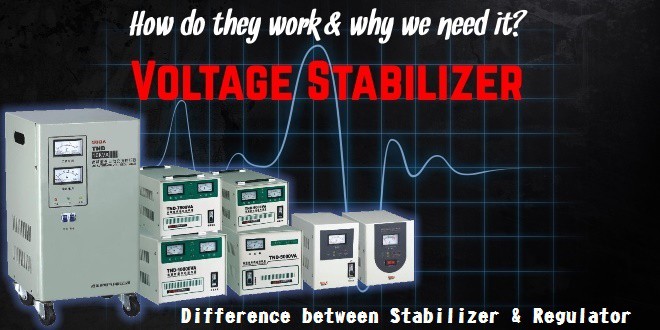
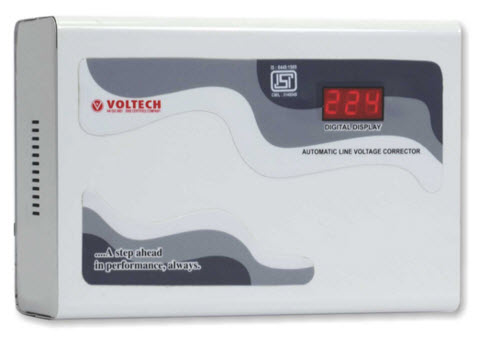


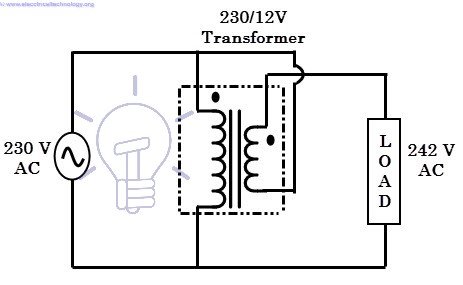
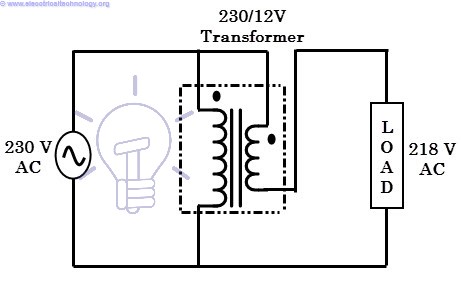
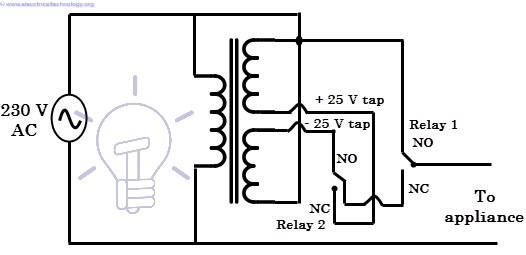
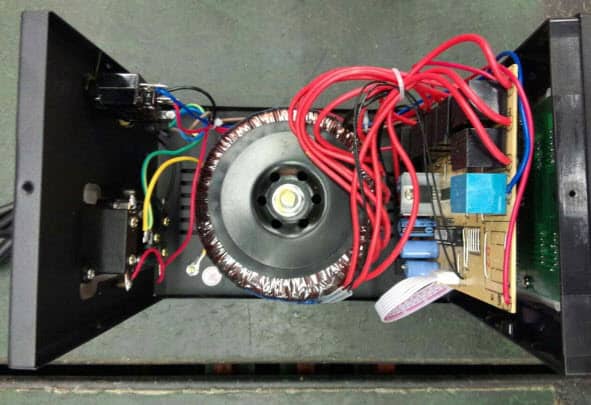
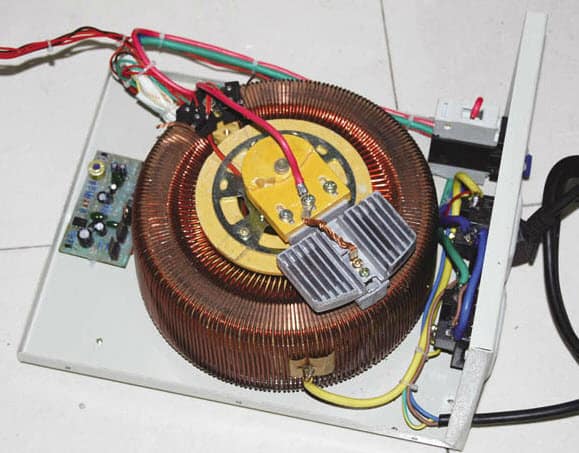
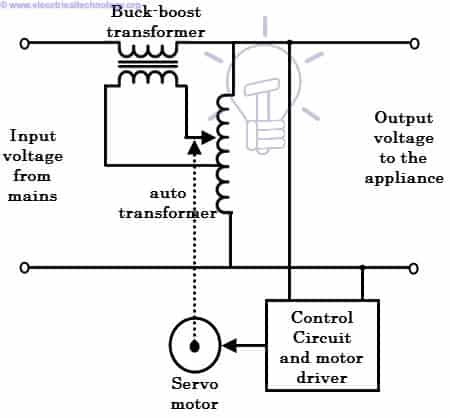
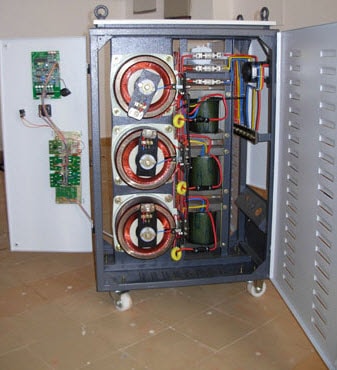

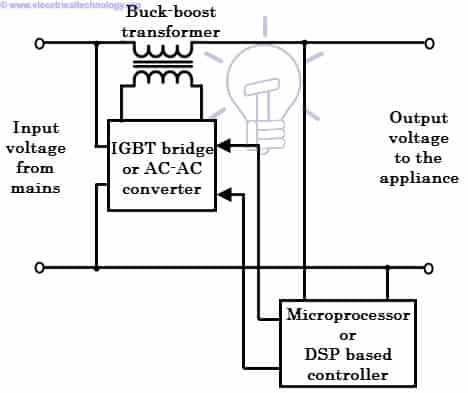






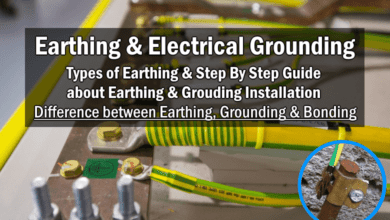

Excellent, like it. Are you able to give me a PDF copy.
Is stabilizer need to connect to load at the time of commissioning . We have PSI stabilizer and have problem at commissioning.
OH! So that’s how voltage stabilizers works
Simple but very helpful
what is the purpose of RS232/RS485 communication feature in modern voltage stabilizers?
ANS: For monitoring the data of stabilizer such as a input voltage, output voltage,supply frequency and load current from control room RS232/RS485 communication is necessary.
What is CVT type of CVT please explain with photo and construction
Very good information
In Introduction of stabilizer, you mentioned user can adjust the voltage. Unfortunately in relay type stabilizer user can not adjust the voltage by any keypad.
nice information, i need a help i live in rural under construction area, here is voltage is very low as 100v but some times goes high means very fluctuations in voltage. in my house i have refrigerator, desktop pc, washing machine 6kg, and geyser. i had install stabilizer(relay based) in main line of 10Kv which made by local electric shop. but its not work for my desktop pc its always restart whenever voltage fluctuate so any solution for my pc which stabilizer good for me.
Why it does not work? Does it va and load current is lower then stabilizer?
YOUR INFORMATION WAS VERY HELPFUL.
WILL YOU PLEASE PUT SOME LIGHT ON POWER CONSUMPTION FOR BOT TYPES. I FOUND WHEN INPUT IS AS DOWN AS 150 VOLTS, SERVO USES/SUCKS ALMOST TWICE THE CURRENT!
PLEASE SHED SOME LIGHT ON THIS.
Regards.
Very helpful thanks a lot
very good explanation. i would like have igbd controller circuit
We have translated your content and placed it on our site
Thank you for your content
Thank you. It would be great if you give proper credit and link to our content.
stabilizer gives AC or DC supplies ?
hello. great information. I have a question
Do Voltage Stabilizers adjust the output AC frequency to the desired design? ie 50Hz or 60Hz
What is principal of voltage stabilizer
I want to stabilizer for motor
Hello, Thanks for providing such important information.
so what size of voltage stabilizer is needed for 3 phase submersible pump 100KVA?
Applying the Mathematical Expression Above:
A 3-phase Voltage Stebilizer of: (120-130)KVA is Suitable
That’s nice work, Intelligent Line Conditioner three Phase. It is a device that protects all the electrical devices and appliances in your homes and offices. love this type of home automation products
Generally,voltage stabilizers will take time to be on when the the power is on.They will not be on instantly when switched on.They will usually buy time,say a few seconds to their function.But,i recently bought an Everest CLASSIC stabilizer for my LED LG tv,which instantly picks up the current when the main switch is put on.Is it normal.?I am afraid whether the stabilizer is in good condition or not and to use it for the tv,further.kindly clear my doubts.Thank you,
R.Gopalakrishnan,
17.10.19.
Why my Everest classic stabilizer for my LG LED tv starts instantly when the power is fed?Normally,all stabilizers will buy time to get started.Why my stabilizer is freaky?Starting instantly is good or not?
Kindly enlighten me in this regard,Thank you,
Hey, what a brilliant post I have come across and believed me I have been searching out for this similar kind of post for past a week and hardly came across this. Thank you very much and I will look for more postings from you.
Hey do you have Century 1KVA Automatic Voltage Stabilizer – 1000VA in store
I want to convert my square wave AC inverter to pure sine wave ,Do stabilizer convert this? Please Help me
Now I know the working and operation of stabilizer. Thanks for clear information. Keep it up…
Thank you for providing info about Voltage stabilizers. Keep up the good work.
Can we install pwm igbt static stabilizer on home main line, is it durable?
Thank you for this explanatory article about Voltage Stabilizers… I hope you will never mind if I use some of the images in my college work.
Thank you for clear explanations.
Very interesting. How can you evaluate or monitor the variance in your home? Do appliances ever have these installed when they are manufactured, for example an air conditioner? Is this a device that could be installed for a whole home to save power? What are the risks? Would you need to measure the power use of each electrical appliance to install the correct device? I appreciate the explanation!
Thank you for the explanatory article.
free wound stabilizer air cooled